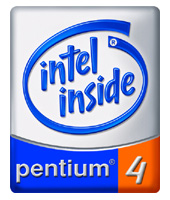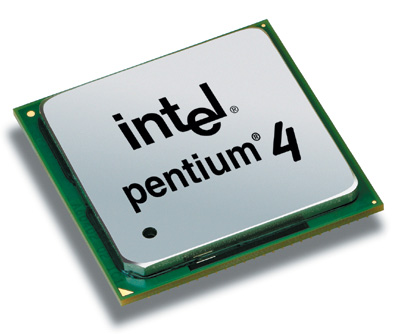
 |

|
| ActiveWin: Reviews | Active Network | New Reviews | Old Reviews | Interviews |Mailing List | Forums |
|
|
|
|
|
DirectX |
|
ActiveMac |
|
Downloads |
|
Forums |
|
Interviews |
|
News |
|
MS Games & Hardware |
|
Reviews |
|
Support Center |
|
Windows 2000 |
|
Windows Me |
|
Windows Server 2003 |
|
Windows Vista |
|
Windows XP |
|
|
|
|
|
|
|
News Centers |
|
Windows/Microsoft |
|
DVD |
|
Apple/Mac |
|
Xbox |
|
News Search |
|
|
|
|
|
|
|
ActiveXBox |
|
Xbox News |
|
Box Shots |
|
Inside The Xbox |
|
Released Titles |
|
Announced Titles |
|
Screenshots/Videos |
|
History Of The Xbox |
|
Links |
|
Forum |
|
FAQ |
|
|
|
|
|
|
|
Windows XP |
|
Introduction |
|
System Requirements |
|
Home Features |
|
Pro Features |
|
Upgrade Checklists |
|
History |
|
FAQ |
|
Links |
|
TopTechTips |
|
|
|
|
|
|
|
FAQ's |
|
Windows Vista |
|
Windows 98/98 SE |
|
Windows 2000 |
|
Windows Me |
|
Windows Server 2002 |
|
Windows "Whistler" XP |
|
Windows CE |
|
Internet Explorer 6 |
|
Internet Explorer 5 |
|
Xbox |
|
Xbox 360 |
|
DirectX |
|
DVD's |
|
|
|
|
|
|
|
TopTechTips |
|
Registry Tips |
|
Windows 95/98 |
|
Windows 2000 |
|
Internet Explorer 5 |
|
Program Tips |
|
Easter Eggs |
|
Hardware |
|
DVD |
|
|
|
|
|
|
|
ActiveDVD |
|
DVD News |
|
DVD Forum |
|
Glossary |
|
Tips |
|
Articles |
|
Reviews |
|
News Archive |
|
Links |
|
Drivers |
|
|
|
|
|
|
|
Latest Reviews |
|
Xbox/Games |
|
Fallout 3 |
|
|
|
Applications |
|
Windows Server 2008 R2 |
|
Windows 7 |
|
|
|
Hardware |
|
iPod Touch 32GB |
|
|
|
|
|
|
|
Latest Interviews |
|
Steve Ballmer |
|
Jim Allchin |
|
|
|
|
|
|
|
Site News/Info |
|
About This Site |
|
Affiliates |
|
Contact Us |
|
Default Home Page |
|
Link To Us |
|
Links |
|
News Archive |
|
Site Search |
|
Awards |
|
|
|
|
|
|
|
Credits |


|
Product: Pentium 4 2.2GHz - Intel D845BG
Motherboards Company: Intel Website: http://www.intel.com Estimated Street Price: $529.00 (for the CPU) Review By: Julien Jay |
Benchmarks Analysis
|
Table Of Contents |
As you can see by reading our benchmarks, the first obvious thing is that the Celeron 1.3GHz now manage to surpass the Tualatin 1.2GHz CPU apart for a few specific tests that rely on the 133 MHz bus offered by the Pentium III. The Pentium III 1.2GHz gets honors since it manages to approach, most of the time the results of a Pentium 4 1.7GHz. Logically the Pentium 4 2.2 GHz is the most powerful processor, with results that speak by themselves, surpassing every other platform. Itís a fact the Pentium 4 2.2GHz blows away every other CPU but we'd expect a much more significant advance over other CPUs: it seems, once again, the Pentium 4 is penalized by its oversized pipeline. The Pentium 4 2.0A GHz CPU demonstrates the importance of having more cache memory since at equal frequency it always outperforms, with a significant advance, its baby brother the Pentium 4 2GHz (willamette). More interesting is the fact that results from games like Quake III Arena and Unreal Tournament seem to reach their ceiling: at a certain moment the brut frequency of the CPU doesnít help to enhance the results anymore since the code of these programs is old and not really optimised for the Pentium 4. Some benchmarks like CPUMathMark 3 and SiSoft 2001 results highlight the fact they donít take in account the quality (or quantity) of the memory attached to the processor.
If youíve carefully looked the results given by Ziff Davis benchmarks you have obviously remarked the Pentium 4 2.2GHz is shortly ahead in comparison of the Pentium 4 2.0A GHz and that there are no 3D WinBench 2000 results for the Pentium 4 2.2GHz. This is due to the fact thereís a major bug in the code of Ziff Davis benchmarks that appears only with 2.2GHz CPUs: ZDís poorly written code clogged up the Pentium 4 pipeline resulting in random errors and abnormally low results. Ziff Davis has confirmed this to be a bug in their software, but so far no patch is available.
This extensive benchmark perfectly shows the variation of performance you can get with the same CPU depending on which chipset you use. Itís no surprise to see the i850 on top of the competition: the Rambus/i850 couple naturally offers the highest memory bandwidth for the high demanding NetBurst architecture resulting in top notch performance. The i845 (SDR) is clearly handicapped by the SDRam memory that is a real bottle-neck for the Pentium 4 resulting in poor performances. The surprise comes from the i845 B0 (DDR)/Pentium 4 couple: here the performances are very good, obviously a little behind of what you can get with a i850 motherboard but the fact is that a i845 B0 (DDR) platform is much more affordable than a i850 one. Our benchmarks clearly show the Rambus/i850 is always on top even with a penalty of 256MB over the i845 B0 due to the fact we used 512MB of DDRAM. This year we should see new Intel chipsets that will normally offer support for PC2600 DDR-SDRAM and PC1200 Rambus memory while the NetBurst bus should reach 533MHz offering more bandwidth for better performance.
If most of actual benchmarking tools now take into play the specific Pentium 4 intrinsic characteristics, theyíre not focused enough on what the Pentium 4 does the best: multimedia. Indeed while the Pentium III platform is an all-terrain one defining the middle of todayís computing road, the Pentium 4 has been designed for high demanding multimedia applications and 3D games. The Pentium 4 is the ultimate solution to enjoy high speed treating times when using high end multimedia applications that code into MPEG 2, rip into WMA or MP3, mount videos, add special effects to videos, etc.
| ę Benchmarks | Conclusion Ľ |




